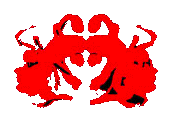|
Note: These questions are part of a larger data base of questions on modules 12 & 13. The questions are selected to represent the type of question you should expect on unit exam two. You can, in fact, expect to see many of these very same questions on that exam. Exam questions, however, may deal with topics not covered in the self tests or in lectures but are discussed in your textbook. You are responsible for the content of your text book plus the content of lectures, interactive activities, & material on the web site.
Use these sample questions to test yourself & to practice for the test. Click on your choice to see if you are right.
1. The study of how natural selection predisposes adaptive traits & behavior is called
2. Historian Arthur Schlesinger calls __________ “the explosive problem of our times.”
 anarchy anarchy
 diversity diversity
 totalitarianism totalitarianism
 mindless conformity mindless conformity
3. Darwin proposed that nature selects traits that best equip organisms to survive & reproduce in their environment. This process is called
 devolution. devolution.
 natural selection. natural selection.
 adaptation syndrome. adaptation syndrome.
 selection of only the fittest. selection of only the fittest.
4. Enduring behaviors, ideas, attitudes, & traditions shared by a large group of people & transmitted from one generation to the next defines
 culture. culture.
 social heritage. social heritage.
 evolutionary heritage. evolutionary heritage.
 the collective unconscious. the collective unconscious.
5. A cultural perspective
 defines society. defines society.
 spotlights human adaptability. spotlights human adaptability.
 highlights universals in human nature. highlights universals in human nature.
 highlights the role of our evolved genes in determining cultural patterns. highlights the role of our evolved genes in determining cultural patterns.
6. Human kinship is to the ___________ perspective as social diversity is to the ______________ perspective.
 humanistic; cultural humanistic; cultural
 evolutionary; cultural evolutionary; cultural
 biological; humanistic biological; humanistic
 cognitive; psychoanalytic cognitive; psychoanalytic
7. Cultural diversity is best illustrated in which of the following?
 norms regarding incest norms regarding incest
 norms regarding etiquette norms regarding etiquette
 norms regarding status & authority norms regarding status & authority
 all of these factors illustrate cultural diversity. all of these factors illustrate cultural diversity.
8. According to Roger Brown, a “universal norm” governs the tendency for people to
 feel indebted to friends or relatives. feel indebted to friends or relatives.
 avoid eye contact with people they do not know. avoid eye contact with people they do not know.
 talk to higher-status people & strangers in the same respectful way. talk to higher-status people & strangers in the same respectful way.
 excuse themselves when they accidentally make physical contact with strangers. excuse themselves when they accidentally make physical contact with strangers.
9. In languages that distinguish between the two forms of “you,” the familiar form is used with _____ and the respectful form is used with _____.
 children; adults children; adults
 inferiors; superiors inferiors; superiors
 intimates; strangers intimates; strangers
 all of the above! all of the above!
10. The incest taboo is
 a universal norm. a universal norm.
 is only of interest to sociologists. is only of interest to sociologists.
 violated less often than psychologists once believed. violated less often than psychologists once believed.
 explained by the theory of psychodynamic relativism. explained by the theory of psychodynamic relativism.

11. The characteristics people associate with male & female define
 gender. gender.
 sexuality. sexuality.
 sex roles. sex roles.
 sex differences. sex differences.
12. In general, women more than men give priority to
 creativity creativity
 skill mastery. skill mastery.
 independence. independence.
 close relationships. close relationships.
13. In groups, men talk more ______________, whereas women talk more _____________.
 about people; about issues about people; about issues
 to show support; to criticize to show support; to criticize
 about others; about themselves about others; about themselves
 to give information; to show support to give information; to show support
14. Men are more likely than women to gravitate toward jobs that
 reduce inequalities. reduce inequalities.
 enhance inequalities. enhance inequalities.
 require empathy skills. require empathy skills.
 enhance independence. enhance independence.
15. In essentially every society, men, relative to women,
 are socially dominant. are socially dominant.
 have higher self-esteem have higher self-esteem
 are more communitarian. are more communitarian.
 have poorer vocabularies. have poorer vocabularies.
16. Across cultures, men
 are more likely to initiate sexual activity. are more likely to initiate sexual activity.
 prefer women with physical features that suggest fertility. prefer women with physical features that suggest fertility.
 strive to offer women external resources & physical protection. strive to offer women external resources & physical protection.
 do all of the things noted above. do all of the things noted above.
17. Evolutionary psychologists respond to their critics by saying
 the criticisms are “flat-out wrong.” the criticisms are “flat-out wrong.”
 cultural explanations are guilty of hindsight explanations. cultural explanations are guilty of hindsight explanations.
 their field is an empirical science that tests its predictions with a variety of data. their field is an empirical science that tests its predictions with a variety of data.
 all of the above all of the above
18. A set of behavior expectations for males or females defines gender
 roles. roles.
 types. types.
 positions. positions.
 identities. identities.
19. Which of the following terms best describes the relationship between biology & culture?
 interaction interaction
 competition competition
 interpolation interpolation
 reciprocation reciprocation
20. A very strong cultural norm dictates that males should be taller than their female mates. This height norm is evidence that
 what is biologically “fit” may be culturally disastrous. what is biologically “fit” may be culturally disastrous.
 biology and culture interact to develop gender-role norms. biology and culture interact to develop gender-role norms.
 relationship behavior is influenced more by biology than culture. relationship behavior is influenced more by biology than culture.
 gender roles are essentially cultural and thus completely arbitrary. gender roles are essentially cultural and thus completely arbitrary.
• Print Friendly Version
Social Psychology
Robert C. Gates

|
| 
















